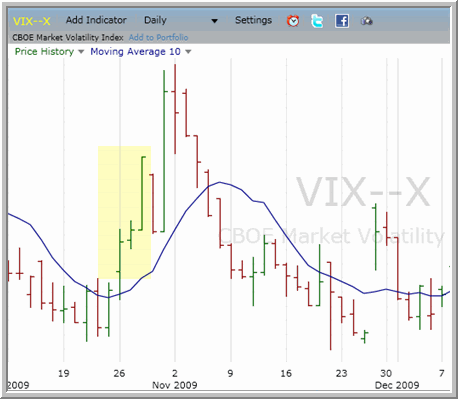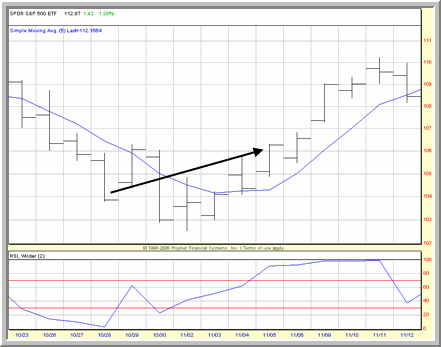Trading the VIX: Short Term Strategies for High Probability Traders
On the final trading day of 2009, traders saw a spike in the VIX, or CBOE Volatility Index. This spike, which saw the VIX climb more than 6% above its 10-day moving average, accompanied a significant sell-off in the markets – and may be anticipating an opportunity for high probability traders.
Click here to order your copy of The VXX Trend Following Strategy today and be one of the very first traders to utilize these unique strategies. This guidebook will make you a better, more powerful trader.
Many people talk about the VIX. But few have actually read sound research on what the VIX truly measures, and how best to interpret it as a short term trader. Fortunately, in addition to his work on stocks and exchange-traded funds (ETFs), Larry Connors, founder and CEO of TradingMarkets.com, has also completed significant research on short term trading strategies that work – using the VIX.
What is the VIX?
The VIX, or CBOE Volatility Index is an indicator which measures the implied volatility of S&P 500 index options While the VIX is traditionally viewed in a static way, with higher VIX values indicating “fear” and a potential buying opportunity and lower VIX values indicating “complacency” and a potential selling opportunity, the research by Larry Connors and his research team – most recently published in the book, Short Term Trading Strategies That Work – shows that this is not the best way to view the VIX.
Writing in Short Term Trading Strategies That Work, Larry noted:
“Many web sites, books and analysts attempt to use static numbers for the VIX. This is completely incorrect … The proper way to use the VIX is to look at where it is today relative to its 10-day moving average. The higher it is above its 10-day moving average, the greater the likelihood the market is oversold and a rally is near.”
By treating the VIX as a dynamic indicator rather than a static one, the VIX is more helpful for the average trader than ever before.
Trading the VIX
This understanding of how the VIX actually works – and how short term traders can make the VIX work for them – has allowed Larry and his research team to develop a number of high probability, short term trading strategies based on the volatility index.
Again, some of these high probability strategies have been published in Short Term Trading Strategies That Work. An example of such a strategy is the VIX Stretches Strategy, which can be used to trade equity index ETFs like the ^SPY^.
The VIX Stretches Strategy goes directly to the issue of the dynamic VIX as opposed to the static VIX. Here, we are looking for the VIX to close above its 10-day moving average by 5% or more for three days in a row. On the third close above the 10-day, the trader buys the SPY on the close.
The exit for the VIX Stretches Strategy is a close in the SPY with its 2-period RSI of more than 65.
Here’s a recent example of a VIX Stretches Strategy trade in action from earlier this year.
The VIX was rising in the second half of October 2009. From an intraday low near 20 on October 21st, the VIX climbed to as high as 31 by month’s end.

Over the course of that advance, the VIX managed to close more than 5% beyond its 10-day moving average for three days in a row: October 26, October 27, October 28. The VIX Stretches Strategy calls for taking a long position in the SPY on the close of October 28. The SPY that day closed at 103.85.
From here, the high probability trader simply waits for the 2-period RSI in the SPY to climb above 65 in order to exit the position. That exit comes a few days later on November 5th, with the SPY closing at 106.28 for a gain of more than 2%.

The VIX Stretches Strategy is just one of a number of high probability trading strategies for short term traders in Larry Connors’ book, Short Term Trading Strategies That Work. For more high probability set-ups and strategies, stop by the TradingMarkets store and pick up a copy of Larry Connors’ Short Term Trading Strategies That Work today!
David Penn is Editor in Chief at TradingMarkets.com.
